| Tool | Best For | Key Feature | Limitation |
|---|---|---|---|
| Microsoft Purview Audit | Compliance and real-time monitoring | Unified audit logs | Limited customization |
| Teams Admin Center | Basic activity tracking | Simple interface | Minimal historical data |
| Teams Client Logs | Client-side troubleshooting | Diagnostic data | Requires technical knowledge |
| Splunk | Advanced analytics and automation | Multi-source integration | Complex setup |
| SolarWinds SEM | Real-time security monitoring | Automated alerts | Intricate setup |
| ManageEngine Log360 | Centralized log analysis | Correlation across platforms | Scalability concerns |
| Netwrix Auditor | Compliance and change tracking | Configuration monitoring | Limited real-time capabilities |
Choose a tool based on your organization's needs, budget, and compliance requirements. Native Microsoft tools are cost-effective for basic needs, while third-party solutions like Splunk and ManageEngine offer advanced features for larger enterprises.
Microsoft Purview Audit is a tool within the Microsoft ecosystem designed to track and monitor authentication events across your Microsoft 365 environment.
Purview Audit seamlessly integrates with Microsoft Teams and other Microsoft 365 services, offering a centralized view of authentication data. It automatically collects information from Teams, SharePoint, Exchange, and OneDrive, creating a unified audit trail.
This setup allows you to keep tabs on activities like sign-ins, failed login attempts, and multi-factor authentication events - all accessible directly from the Microsoft 365 compliance center. This integration simplifies monitoring and helps ensure a thorough review of authentication events.
The platform logs detailed records of Teams authentication events, capturing actions like successful sign-ins and changes to authentication settings. These logs include key details such as timestamps and client application information, providing clear insights into access patterns and potential risks.
Purview Audit includes customizable alerts to notify security teams when unusual activity, such as repeated failed sign-ins, is detected. These alerts work alongside Microsoft’s broader security tools, enabling quick action to address potential threats.
The solution also helps meet compliance requirements by generating audit reports that align with industry standards. It includes privacy controls that let administrators manage access to sensitive authentication data, ensuring audit trails are secure and only accessible to authorized personnel.
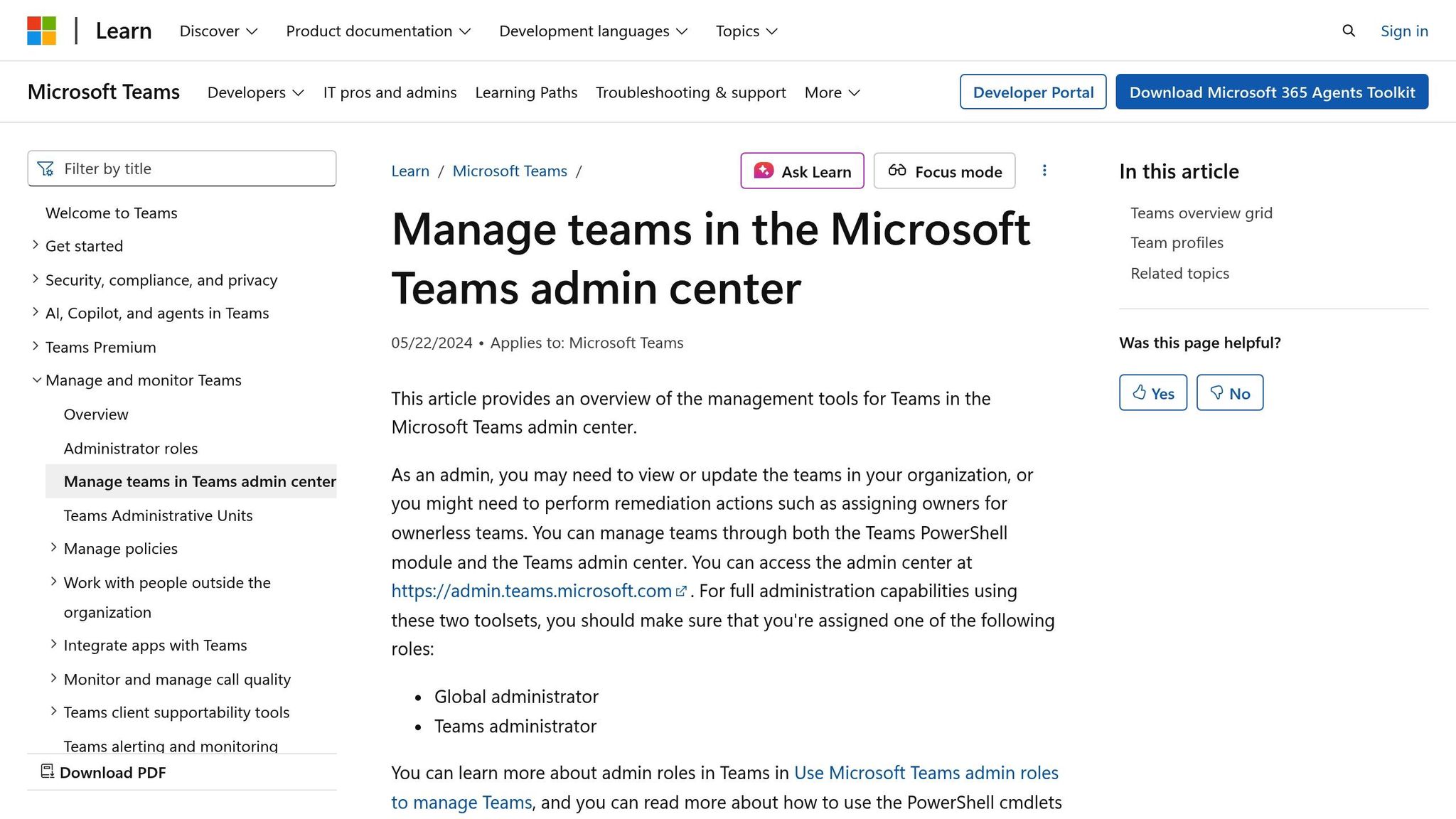
The Microsoft Teams Admin Center simplifies the management of Teams by giving administrators a centralized platform to view sign-in data and basic authentication events, all integrated with Microsoft 365.
This Admin Center connects directly to your Microsoft 365 tenant, allowing access to sign-in reports and activity summaries. The Users tab provides a detailed look at individual sign-in activity, while the Analytics & Reports section highlights overall usage trends. It also includes tools to track guest user activity, ensuring secure collaboration with external partners. This integration provides a broad overview of activity, which will be explored further in the next section.
The Admin Center offers a snapshot of sign-in events, such as successful and failed login attempts. However, it doesn’t go into the level of detail found in other Microsoft 365 audit tools. For more in-depth data - like IP addresses, device information, or multi-factor authentication activity - you’ll need to rely on specialized tools designed for detailed auditing. The Admin Center is best suited for high-level monitoring rather than granular analysis.
To maintain security and privacy, the portal uses role-based access controls, limiting who can access sensitive user activity data. By summarizing Teams authentication and access trends, the Admin Center plays a key role in supporting your organization’s compliance and security management efforts.
Microsoft Teams Client Diagnostic Logs are automatically created by the desktop and mobile apps to help identify and resolve authentication and client-side issues. These logs serve as an additional resource, complementing broader audit tools by focusing on specific client-side irregularities that might impact authentication.
Within the Microsoft ecosystem, these logs are a key part of diagnostic workflows. While primarily aimed at troubleshooting client-related problems, they can also highlight authentication issues when paired with audit tools. Teams Support Log Files include details on media, signaling, and platform data, offering valuable insights for resolving client-side problems and supporting authentication monitoring when used alongside auditing solutions like Purview Audit.
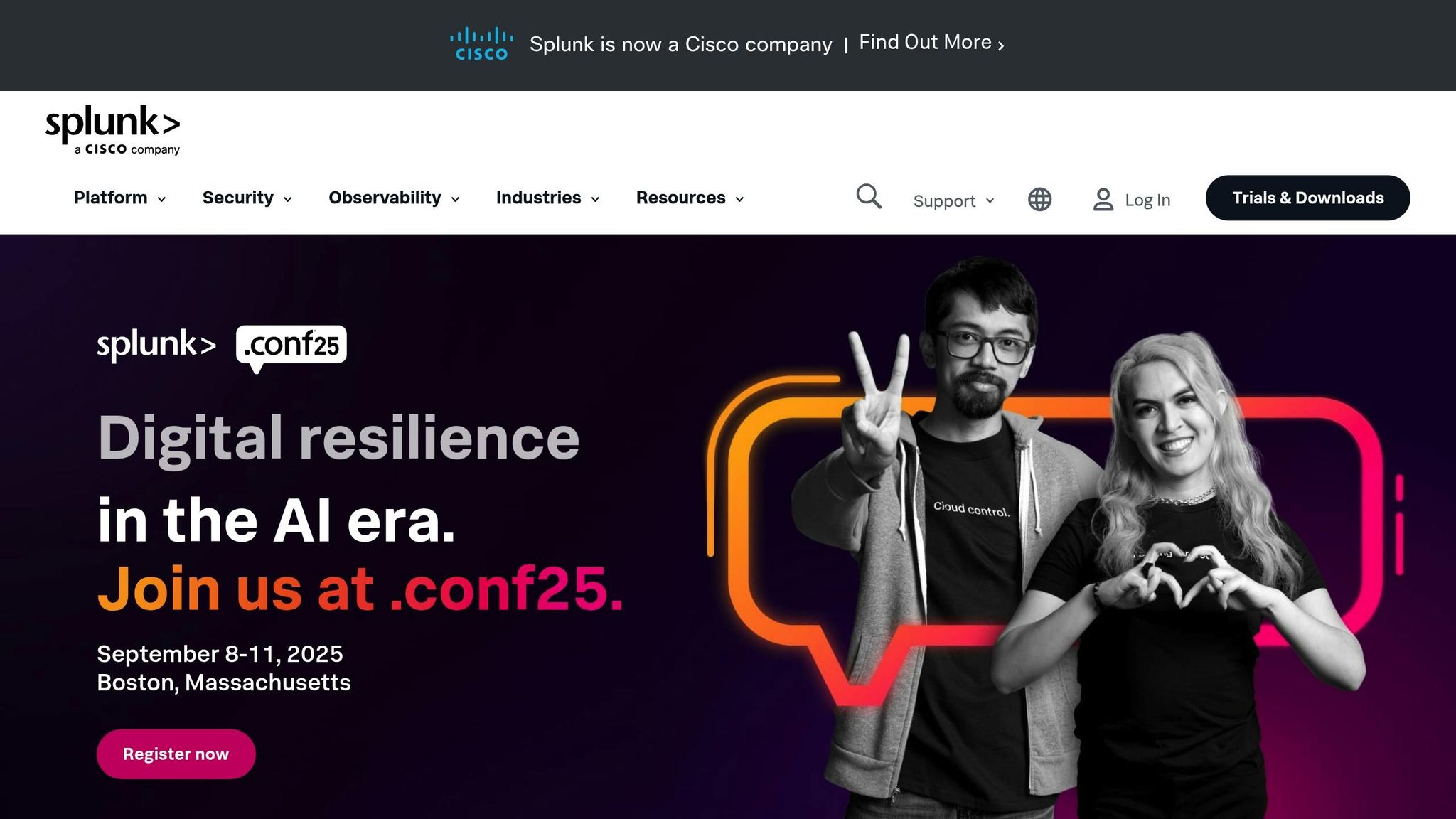
Splunk takes log data and converts it into actionable insights for security monitoring. When used as part of a broader monitoring strategy, it enhances the analysis of Teams logs by combining data from multiple platforms into a single, cohesive view.
By aggregating and standardizing authentication logs from Teams, Azure AD, and other systems, Splunk provides a unified perspective on security events. It builds on earlier tools by pulling in data from diverse sources, extending your ability to monitor and respond effectively.
Splunk integrates seamlessly with Microsoft 365 environments using the Microsoft 365 App for Splunk and direct API connections. It collects Teams authentication logs, Azure Active Directory sign-in events, and Exchange Online audit logs, consolidating them into a central repository for analysis.
The setup involves configuring data inputs to pull authentication events from the Microsoft Graph API and Office 365 Management Activity API. This process captures critical details like user sign-ins, failed login attempts, and multi-factor authentication (MFA) events across the Microsoft 365 tenant.
What sets Splunk apart is its ability to standardize data from various Microsoft services into a consistent format. This makes it simpler to create dashboards that display authentication activity across Teams, SharePoint, and other Microsoft 365 applications in one cohesive view.
Splunk doesn’t just monitor in real time; it also automates incident response. Through custom alerts and integrations like Splunk Phantom, it can take immediate action - such as disabling compromised accounts or notifying security teams - when anomalies are detected.
With custom queries, organizations can uncover complex attack patterns that unfold over time. For example, Splunk can identify scenarios where an attacker gains access to Teams after multiple failed login attempts and then immediately accesses sensitive channels or downloads critical files.
Splunk goes beyond basic log analysis by correlating Teams authentication events with other data, such as file access logs, meeting records, and administrative actions. This creates detailed user activity timelines.
Using Search Processing Language (SPL), security analysts can run advanced queries on historical authentication data. For instance, they can investigate questions like, "Who accessed Teams from new devices in the last 30 days?" or "What authentication patterns preceded a data breach?"
Splunk’s long-term data retention capabilities are also a key advantage. Depending on organizational needs, authentication logs can be stored for months or even years, supporting compliance audits and investigations into incidents that may have gone unnoticed for extended periods.
Splunk helps organizations meet compliance requirements for standards like SOX, HIPAA, PCI DSS, and GDPR through built-in reporting tools and role-based access controls.
To protect sensitive information, Splunk offers data masking options, allowing teams to hash or encrypt personally identifiable information in Teams logs while still enabling meaningful analysis.
Role-based access controls ensure that only authorized individuals can view sensitive data. Permissions can be tailored to restrict access to specific logs based on user roles, departments, or security clearance levels, adding an extra layer of security to the monitoring process.
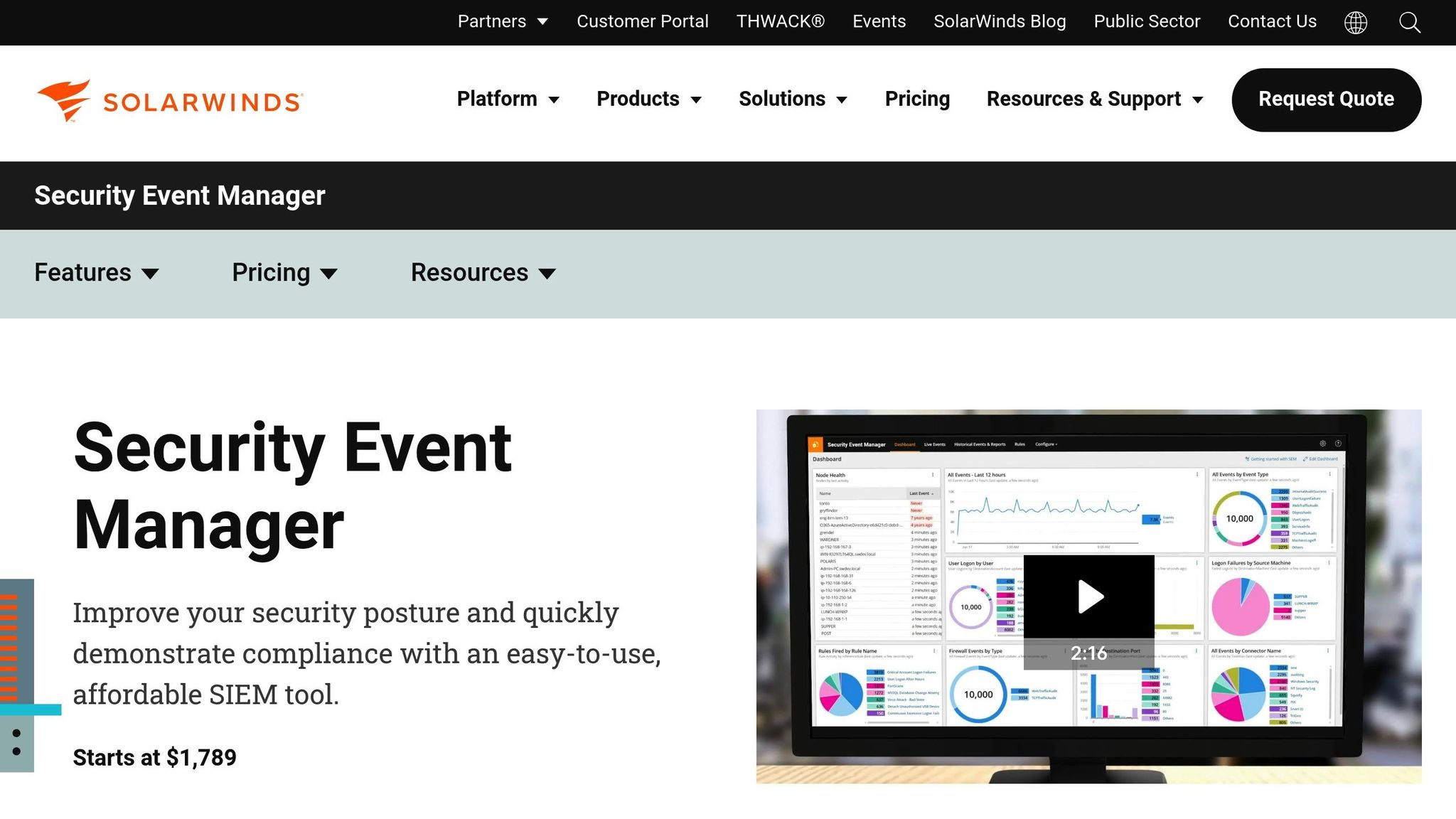
SolarWinds Security Event Manager (SEM) takes a page from Splunk's integrated strategy by offering a specialized focus on Microsoft Teams and Microsoft 365 authentication logs. It stands out by correlating these logs to detect unusual activity and assist with compliance audits. With real-time event monitoring, it creates a centralized audit trail, making security investigations more efficient and straightforward.
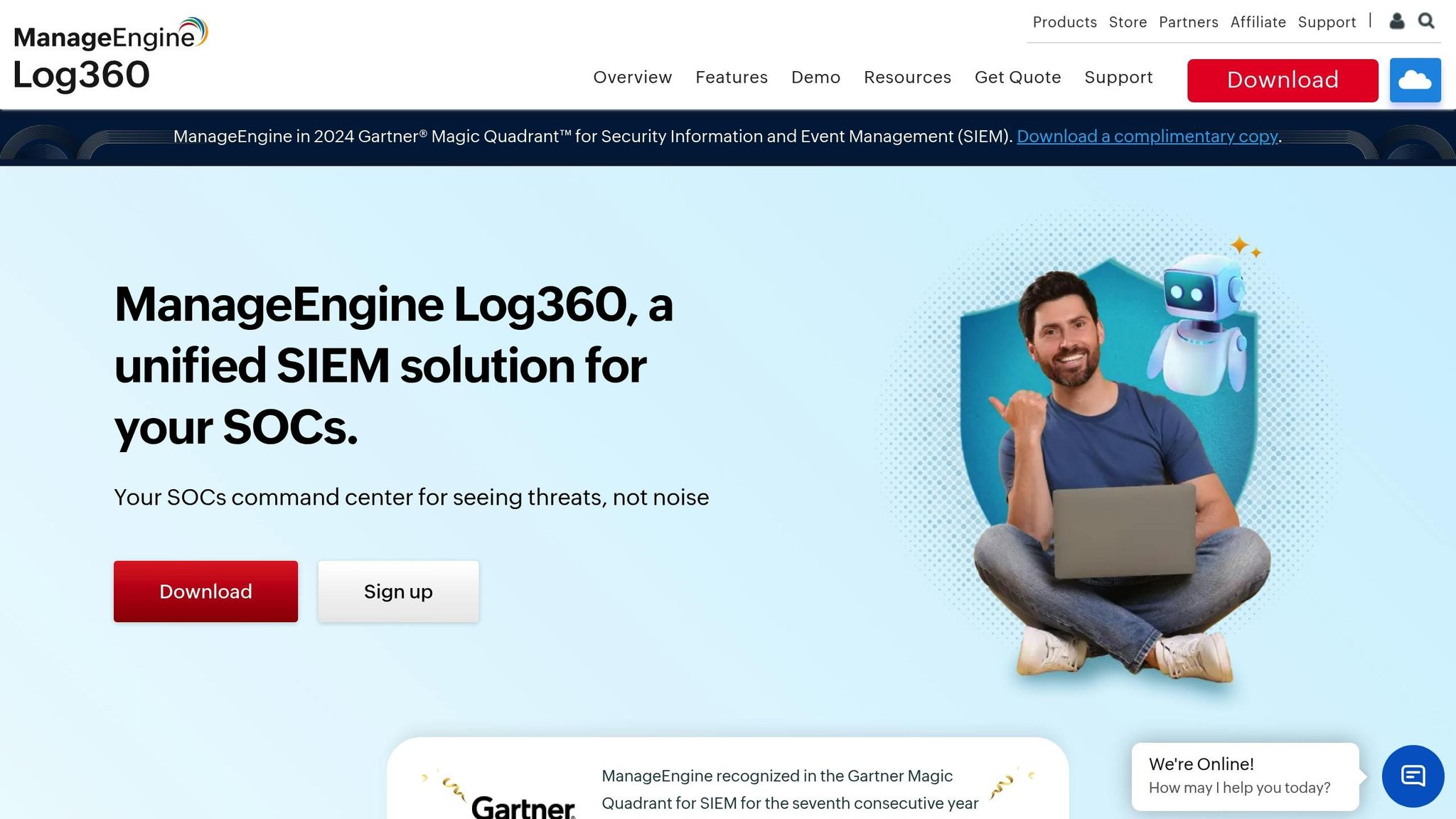
ManageEngine Log360 takes a unified SIEM approach to monitor Microsoft Teams and Microsoft 365 authentications. It combines centralized log collection with in-depth analysis, offering more than just basic monitoring - it provides actionable insights into security.
Log360 integrates directly with Microsoft Teams and Microsoft 365 through API connections, allowing it to seamlessly gather and correlate authentication logs across services. This integration ensures a centralized view of sign-ins, user activities, and security events across platforms like Teams, Exchange Online, and SharePoint.
One standout feature is its ability to correlate authentication data from multiple sources. For example, when a user logs into Teams, Log360 can simultaneously track their Active Directory authentication, Exchange Online access, and SharePoint usage. This creates a comprehensive picture of user behavior, making it far more effective than standalone tools. This thorough integration also lays the foundation for its advanced alerting capabilities.
Log360 is designed to detect unusual activity, such as failed logins, access from unexpected locations, or brute-force attacks. It sends instant alerts via email or SMS, enabling security teams to act quickly when a threat arises.
For instance, if a user attempts to log into Teams from an unknown device or location, the platform immediately triggers an alert. Security analysts can then review the details, cross-reference with other activities, and take steps like disabling the account or requiring additional verification.
ManageEngine reports that organizations using Log360 have reduced incident response times by up to 40% thanks to real-time alerts and automated workflows. The platform’s ability to correlate events and provide context helps security teams make faster, more informed decisions.
Log360 captures every authentication event across Teams and Microsoft 365, including successful and failed logins, multi-factor authentication (MFA) status, role changes, and access to sensitive resources.
Its audit tools go beyond simple logging, offering customizable dashboards and pre-built reports that highlight trends, failed login attempts, and anomalies. These reports can be generated on demand or scheduled, making them useful for both daily monitoring and executive-level reviews.
For organizations bound by regulations like HIPAA, GDPR, or PCI-DSS, Log360 simplifies compliance by providing detailed audit trails, customizable retention policies, and role-based access controls.
Users report faster compliance preparation, with audit report generation times dropping from days to minutes using the platform’s automated features. Log360 also ensures secure log storage and transmission through encryption and tamper-evident mechanisms. Detailed access logs track who views or modifies authentication data, adding another layer of accountability.
Log360 starts at approximately $595 per year for smaller environments. With support for both on-premises and cloud deployments, it caters to organizations with hybrid infrastructure needs.
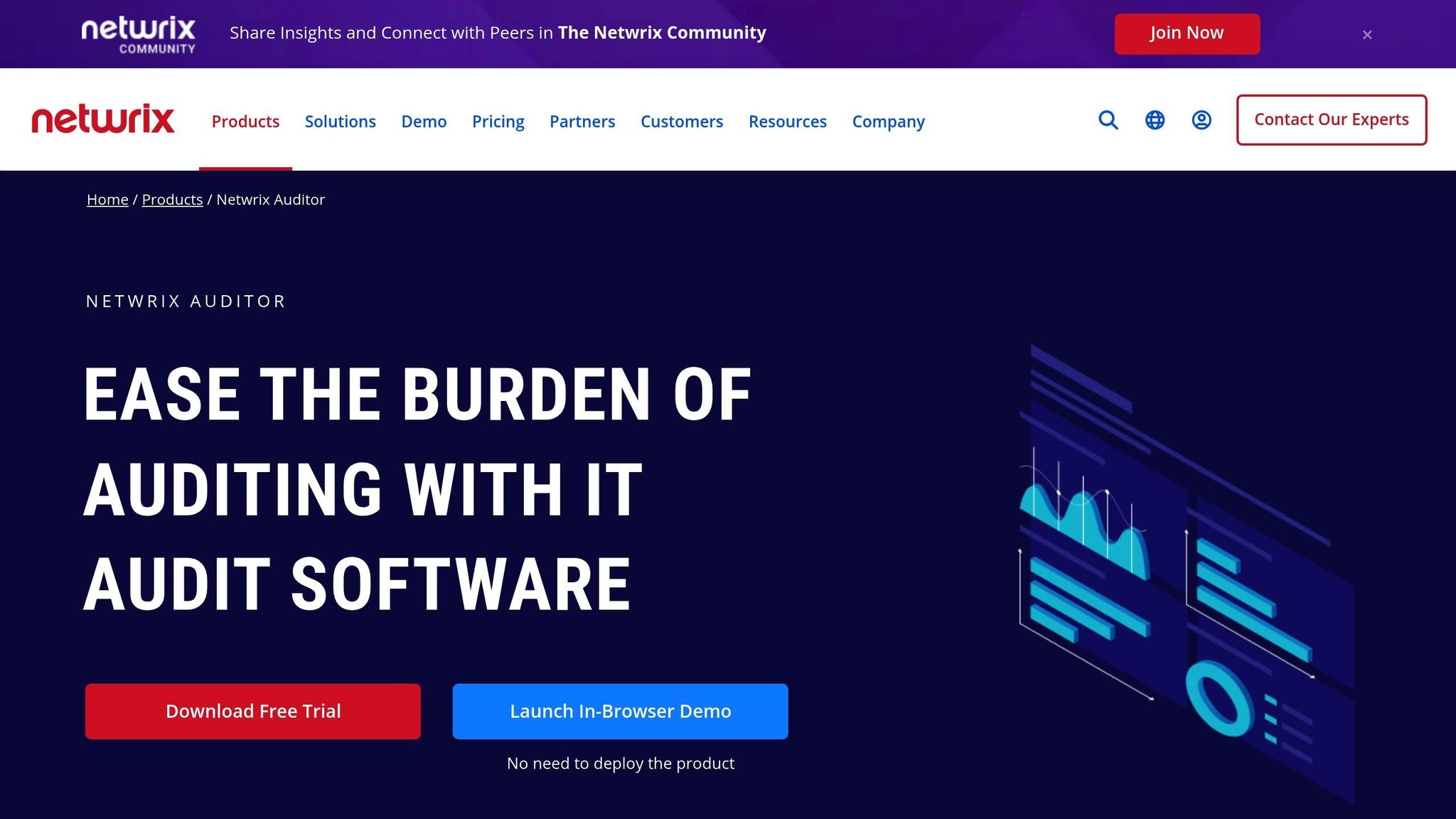
Netwrix Auditor is a tool built to improve visibility and keep tabs on changes within Microsoft Teams and Microsoft 365 environments. It goes beyond just tracking security events by monitoring authentication activities and configuration changes that could affect security.
This tool integrates seamlessly with Microsoft Teams and Microsoft 365 through APIs. It simplifies data collection and keeps an eye on changes as your Teams channels evolve over time.
Netwrix Auditor sets up a baseline for normal activity and sends real-time alerts when something out of the ordinary happens, like logins at unusual hours. These alerts come with context, helping administrators act quickly. If needed, automated incident response actions can also be triggered to address potential threats immediately.
The platform doesn’t just log successful and failed login attempts - it also tracks security-setting changes, like password updates or modifications to multi-factor authentication (MFA) settings. This level of detail supports routine security reviews and allows for thorough investigations when incidents occur. By monitoring configuration changes as well as login data, Netwrix Auditor offers a more complete picture for administrators.
For organizations bound by regulations like SOX, HIPAA, or GDPR, Netwrix Auditor delivers detailed audit trails and compliance reports. It also offers customizable retention policies and strong access controls to protect data integrity and privacy. This makes it a solid addition to any Microsoft Teams security strategy, especially for companies with strict compliance needs.
When selecting a tool, it's essential to match your organization's needs, resources, and compliance requirements with the right solution. Below is a summary of the key features, advantages, and drawbacks of each tool discussed earlier.
| Tool | Key Features | Pros | Cons |
|---|---|---|---|
| Microsoft Purview Audit | Built-in audit logging as part of the Microsoft 365 ecosystem | Integrates seamlessly with Microsoft services | May lack advanced customization options |
| Microsoft Teams Admin Center | Real-time monitoring and user activity reporting | Intuitive interface tailored for Teams management | Limited in-depth historical data analysis |
| Microsoft Teams Client Diagnostic Logs | Client-side diagnostics for troubleshooting performance issues | Offers detailed technical insights | Requires technical expertise to interpret and use effectively |
| Splunk | Log analytics with customizable dashboards and advanced search capabilities | Excellent data visualization and analysis tools | Implementation can be complex and resource-heavy |
| SolarWinds Security Event Manager | Real-time security event monitoring with automated incident response | Features automated alerts and threat detection | Setup can be intricate and may need dedicated resources |
| ManageEngine Log360 | Centralized log management with behavior analytics and reporting | Affordable with a straightforward approach | Scalability may be limited for larger enterprises |
| Netwrix Auditor | Comprehensive auditing and change tracking for IT environments | Provides detailed monitoring and audit trails | Primarily focused on auditing rather than real-time monitoring capabilities |
When deciding, keep the following in mind:
Use this table to ensure the chosen tool aligns with your organization's security, performance, and compliance goals.
Keeping a close eye on Teams authentication logs is a critical task for businesses, no matter their size. The tools discussed in this guide offer various ways to gain deep insights into your Teams environment, ranging from Microsoft's built-in options to advanced third-party platforms.
Having real-time data on login attempts, failed authentications, and unusual access patterns allows organizations to spot and address threats quickly. For example, detecting anomalies like logins from unexpected locations or access during odd hours helps security teams take immediate action to mitigate risks. This proactive approach naturally supports compliance requirements as well.
Regulations often demand detailed records of sensitive communications and data access. Comprehensive authentication logs not only provide the necessary documentation for audits but also ensure your organization meets these regulatory obligations seamlessly.
From an operational standpoint, these tools are invaluable for troubleshooting authentication problems. Whether the issue lies with the network, authentication servers, or user credentials, detailed logs help IT teams resolve problems faster, minimizing downtime and keeping the business running smoothly.
When choosing the right tool, it’s essential to consider your organization’s size and complexity. Microsoft’s native tools can meet the needs of smaller setups, while larger enterprises with intricate requirements may benefit more from advanced third-party solutions.
Finally, consistent monitoring and a well-defined response plan are key to maintaining a strong security posture. Beyond security, regular monitoring offers insights into user behavior, which can guide future IT and security strategies. A disciplined approach to monitoring lays the groundwork for smarter, more secure operations moving forward.
When deciding between native Microsoft tools and third-party solutions for monitoring Teams authentication logs, it’s important to weigh your organization’s specific requirements and goals.
Native Microsoft tools, like the Microsoft 365 Security and Compliance Center, are tightly integrated with the Microsoft ecosystem. They offer real-time alerts, built-in compliance features, and a straightforward setup, making them a strong choice for businesses that prioritize security within Microsoft’s environment.
On the flip side, third-party solutions often provide more advanced analytics, customizable dashboards, and broader threat detection. These options are particularly useful for organizations needing deeper insights or features that go beyond Microsoft’s offerings. Consider factors like cost, ease of implementation, and how well the solution aligns with your security policies when making your choice.
Using tools such as Splunk or ManageEngine Log360 can take your Microsoft Teams security monitoring to the next level by offering advanced capabilities that surpass the built-in options. These platforms deliver features like real-time alerts, in-depth log analysis, and proactive threat detection, making it easier to spot and address potential security issues.
These tools also consolidate logs from various sources, giving you a more complete picture of your system's activity. With options like customizable dashboards and automated incident responses, they simplify threat management and help you react to security concerns swiftly and effectively.
Advanced monitoring tools for Teams authentication logs offer a way to maintain detailed audit trails, which are crucial for demonstrating compliance with regulations such as GDPR and HIPAA. These tools can pinpoint security risks, ensure data remains accurate, and make regulatory reporting more straightforward - helping organizations avoid costly penalties for non-compliance.
Using these tools also boosts transparency, safeguards sensitive information, and fosters trust among stakeholders. Beyond meeting regulatory standards, they play a key role in improving security measures and maintaining operational reliability.